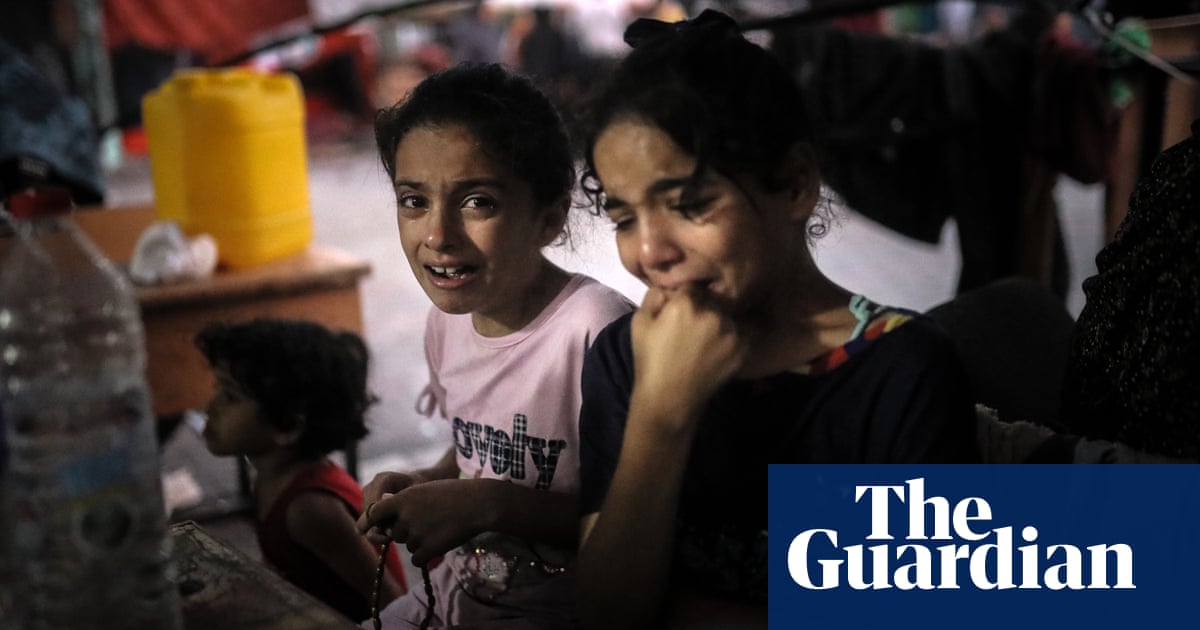Honestly people should watch Born in Gaza. You can see what how their lives have been affected by the constant conflicts throughout their lives.
I’m not advocating for terrorism at all and that should be clear. But you can clearly see why many of these kids are so prone to being radicalized. Unnamed aggressors with no face bombing constantly whether it be farmland or ambulances or what have you. Hamas absolutely should be stopped but there needs to be a different approach. This cycle will just keep producing more and more fighters for them as they believe they are the resistance.
One man’s terrorist is another person’s freedom fighter.
So, how’s that freedom fight going?
Thousands of children are dying at the hands of an oppressive apartheid regime that is being promulgated by ethno-supremacist religious zealots who are using religious zealots in an opposing faction to justify their atrocities. That’s how it’s going.
And what’s worse is when you’re watching , there’s nothing related to religion. There’s just death, poverty, and lack of hope at the forefront. These kids need help so so bad and the international community is throwing a blind eye towards it.
Well, we’re discussing it. So, as expected.
This cycle will just keep producing more and more fighters for them as they believe they are the resistance.
This sentence has been repeated after every flare up there since 1948. Nobody there learns because nobody there wants to. Having a constant enemy is very useful for those in power on both sides.
Not to forget that Likud is a far right party, that needs constant fear and an enemy to continue to thrive, and they have that in the face of Hamas.
Also quite interesting to note is that Israelian settlers can also be quite violent and radicalized, but almost no one is talking about them or about their unprovoked act of aggression.
So when fighting terrorism Israel should not apply double standards and treat all violence no matter the origin equally.
What’s got me particularly worried this time around is that the Israeli response is going to make the radicalization problem so much worse than it was before… unless Israel intends to complete the ethnic cleansing of Gaza. Netanyahu is undeniably evil, but I don’t think he’s stupid, so he must know this too, which can really only mean one thing – but nobody in power in the West seems to be willing to acknowledge that, let alone step in to stop it.
Jesus fuck. All this killing for fucking nothing.
To be honest, I would join anyone too if I was living there. I think it’s really hard not to, on both sides and I applaud and respect the f*ck out of every Palestinian AND Israeli that doesn’t get radicalized by the constant fear and terror.
It is a cycle with no end.
This is the best summary I could come up with:
On Sunday, the Hamas-run health ministry in Gaza said 1,750 children had been killed in the 16 days of bombardment by Israeli forces since Hamas’s murderous onslaught on 7 October.
Children had “started to develop serious trauma symptoms such as convulsions, bed-wetting, fear, aggressive behaviour, nervousness, and not leaving their parents’ sides.”
Since 7 October, they have lived under near constant bombardment, with many packed into temporary shelters in UN-run schools after fleeing their homes with little access to food or clean water.
Studies conducted after earlier conflicts have shown a majority of children in Gaza exhibiting symptoms of post-traumatic stress disorder (PTSD).
After Operation Cast Lead, the three-week war in 2008-09, a study by the Gaza community mental health programme (GCMHP) found that 75% of children over the age of six were suffering from one or more symptoms of post-traumatic stress disorder, with almost one in 10 ticking off every criterion.
Children that the aid agency interviewed “spoke of fear, nervousness, anxiety, stress and anger, and listed family problems, violence, death, nightmares, poverty, war and the occupation, including the blockade, as the things they liked least in their lives”.
The original article contains 695 words, the summary contains 190 words. Saved 73%. I’m a bot and I’m open source!
Developing severe trauma is a weird way to put it. I developed a receding hair line. These children are being traumatized
Traumatic Events and PTSD Among Palestinian Children and Adolescents: The Effect of Demographic and Socioeconomic Factors https://www.frontiersin.org/articles/10.3389/fpsyt.2020.00004/full (2020)
Results: The majority of children and adolescents experienced personal trauma (N: 909; 88.4%), witnessed trauma to others (N: 861; 83.7%) and observed demolition of property (N: 908; 88.3%) during the war. Compared to girls, boys showed significantly more exposure to all three event types as well as overall traumatic events. Results also demonstrated that the prevalence of DSM-V PTSD diagnosis was 53.5% (N = 549). Further, children who had experienced personal trauma, trauma to others, and the demolition of property were significantly more likely to be diagnosed with PTSD compared to those who had not, even when adjusting for demographic and socioeconomic factors. The strongest war trauma for PTSD is personal trauma followed by witnessing trauma and then observing demolition of properties.







